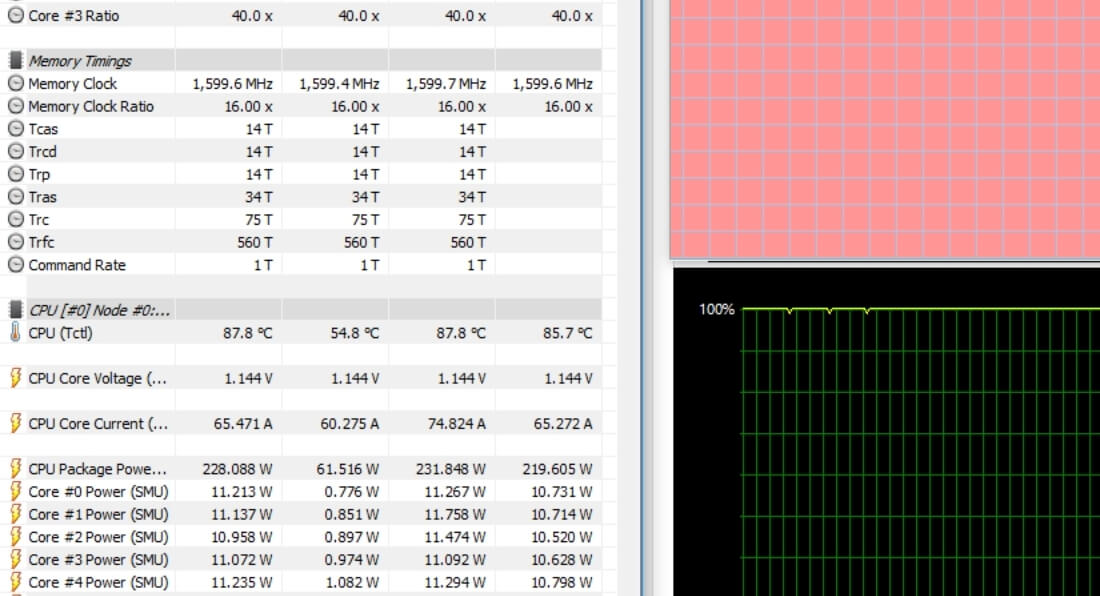Power & Temps

Power consumption is one area where AMD continues to impress. Come to think of it, Intel has also been quite surprising in this department lately, but for the opposite reasons. Whereas the 10-core 7900X pushed total system consumption to an incredible 281 watts in the Corona benchmark, the 16-core 1950X reached just 257 watts, a 9% decrease in total consumption.
That's a truly impressive result for AMD given that the 1950X was faster in every single one of our productivity workloads, sometimes by quite a significant margin, and yet it consumes less power.
The 1920X was extremely fuel-efficient, consuming 26% less power than the 1950X and just 18% more than the 1800X. It also somehow use 15% less power than Intel's 6-core 7800X.
Let's see how things heat up once overclocked...
Temperatures
Using the Thermaltake Floe Riing RGB 360 TT Premium Edition AIO liquid cooler (that's a mouthful), we found some solid temperatures with Threadripper. Using the factory installed TIM, the Floe was fitted to the 1950X with the CPU overclocked to 4.0GHz for all 16-cores. The system ran at a stress temperature of 88 degrees which I thought was good given what we've seen recently from the Core i9-7900X.
Threadripper 1950X @ 4 GHz (All Cores) Stock TIM
Threadripper 1950X @ 4 GHz (All Cores) Reapplied-TIM
Threadripper 1950X (Stock) Reapplied-TIM
However, after removing the cooler and cleaning the TIM, we covered the entire copper base in paste and tried again. To my surprise, temperatures were reduced quite drastically, now peaking at 83.5 degrees but often sitting at just 81 degrees.
With the custom paste still applied, I reverted back to the stock out of the box clock speeds and now the 1950X was hitting just 71 degrees.
For those wondering, temperatures were much the same for the 1920X under the same conditions.




